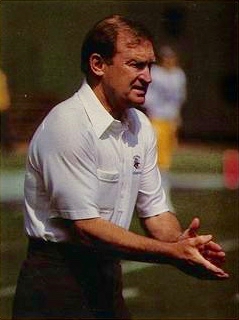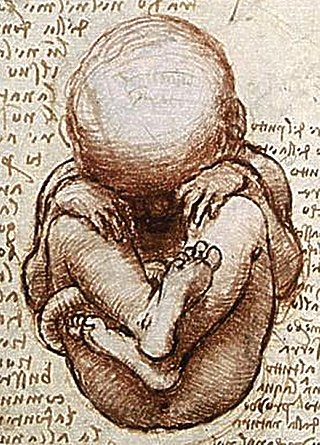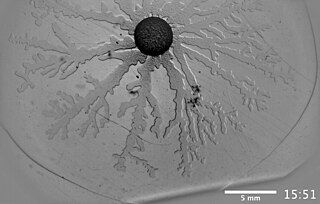Related Research Articles

A melody, also tune, voice or line, is a linear succession of musical tones that the listener perceives as a single entity. In its most literal sense, a melody is a combination of pitch and rhythm, while more figuratively, the term can include other musical elements such as tonal color. It is the foreground to the background accompaniment. A line or part need not be a foreground melody.
Jerkiness, sometimes called strobing or choppy, describes the perception of individual still images in a motion picture.
Beat, beats or beating may refer to:

Gestalt psychology, gestaltism, or configurationism is a school of psychology that emerged in the early twentieth century in Austria and Germany as a theory of perception that was a rejection of basic principles of Wilhelm Wundt's and Edward Titchener's elementalist and structuralist psychology.

Horses can use various gaits during locomotion across solid ground, either naturally or as a result of specialized training by humans.

Optical flow or optic flow is the pattern of apparent motion of objects, surfaces, and edges in a visual scene caused by the relative motion between an observer and a scene. Optical flow can also be defined as the distribution of apparent velocities of movement of brightness pattern in an image.
A script supervisor is a member of a film crew who oversees the continuity of the motion picture including wardrobe, props, set dressing, hair, makeup and the actions of the actors during a scene. The notes recorded by the script supervisor during the shooting of a scene are used to help the editor cut the scene. They are also responsible for keeping track of the film production unit's daily progress. The script supervisor credit is typically in the closing credits of a motion picture. Script supervisors are a department head and play a crucial role in the shooting of a film. It is the script supervisor's job to monitor the camera shots, seeking to maintain coherence between the scenes.

Footwork is a martial arts and combat sports term for the general usage of the legs and feet in stand-up fighting. Footwork involves keeping balance, closing or furthering the distance, controlling spatial positioning, and/or creating additional momentum for strikes.
A motion offense is a category of offensive scheme used in basketball. Motion offenses use player movement, often as a strategy to exploit the quickness of the offensive team or to neutralize a size advantage of the defense.
The Flex offense is an offensive strategy in basketball invented in 1967 by Rene Herrerias while coaching at Cal-Berkeley. It was utilized to bring UCLA's star center, Lew Alcindor, away from the basketball. The offense was originally called the "Cha Cha". It is a patterned offense relying on cuts across the key and down screens to create a "pick-the-picker" action. This offense is most effective against a man-to-man defense, though some ambitious coaches have used it against odd front zones. It is the favored offense of many high school programs because it requires players to be in constant motion and the patterns of screens and cuts are easy to remember. Though dismissed by many coaches at the college level for its predictability, some notable programs still rely on it. It has been run by many NCAA teams, including by Gary Williams of the University of Maryland. Williams used the flex offense to lead the Terrapins to the 2002 NCAA National Championship. Also, Gordie James of Willamette University used the flex offense to lead the Bearcats to the 1993 NAIA Division II National Championship. Additionally, Jerry Sloan ran his variation of it for years with the Utah Jazz.

The barberpole illusion is a visual illusion that reveals biases in the processing of visual motion in the human brain. This visual illusion occurs when a diagonally striped pole is rotated around its vertical axis (horizontally), it appears as though the stripes are moving in the direction of its vertical axis rather than around it.

A basketball playbook, like any sports playbook, involves compilation of strategies the team would like to use during games. The playbook starts as a canvas picture of the basketball court with all its boundaries and lines. On top of that, the playmaker can draw O's for players on offense, and X's for players on defense. Specifically however, the playmaker will need to number them for different positions. They are:

In American football, Air Coryell is the offensive scheme and philosophy developed by former San Diego Chargers coach Don Coryell. The offensive philosophy has been also called the "Coryell offense" or the "vertical offense".

Fetal movement refers to motion of a fetus caused by its own muscle activity. Locomotor activity begins during the late embryological stage and changes in nature throughout development. Muscles begin to move as soon as they are innervated. These first movements are not reflexive, but arise from self-generated nerve impulses originating in the spinal cord. As the nervous system matures, muscles can move in response to stimuli.

Unique Forms of Continuity in Space is a 1913 bronze Futurist sculpture by Umberto Boccioni. It is seen as an expression of movement and fluidity. The sculpture is depicted on the obverse of the Italian-issue 20 cent euro coin.
The run and shoot offense is an offensive system for American football which emphasizes receiver motion and on-the-fly adjustments of receivers' routes in response to different defenses. It was conceived by former high school coach Glenn "Tiger" Ellison and refined and popularized by former Portland State offensive coordinator Mouse Davis.
Wheel offense is an offensive strategy in basketball, developed in the late 1950s by Garland F. Pinholster at the Oglethorpe University. It is a kind of continuity offense in which players move around in a circular pattern to create good scoring opportunities. The wheel offense is a popular offensive play, frequently used by teams from middle school to college levels because it can effectively work against any defense, including zone defense and man-to-man defense.

The perrotine is a block-printing machine invented by Louis-Jérôme Perrot, and practically speaking is the only successful mechanical device ever introduced for this purpose. For some reason or other it has rarely been used in England, but its value was almost immediately recognized on the Continent, and although block printing of all sorts has been replaced to such an enormous extent by roller printing, the perrotine is still largely employed in French, German, and Italian works.
In gridiron football, a shift refers to the movement of an offensive player prior to the snap.

Bacteria collective motion refers to the collective behavior of bacteria observed in the bacteria world.
